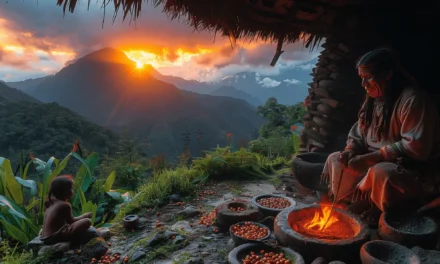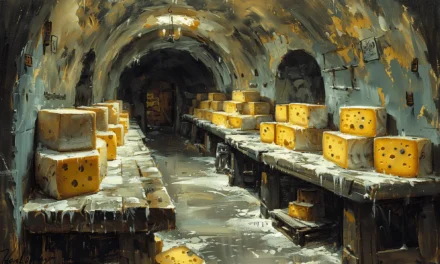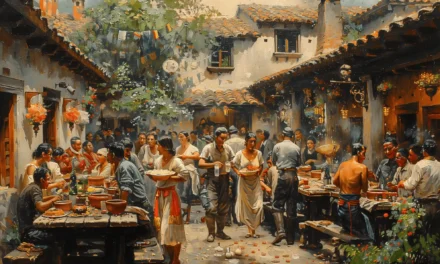Chocolate is like a perfect remedy for whatever ails you. Whether you like it hot and steaming, blended with coffee, or served cold and smooth – it’s like the best hug ever after a long day. Not only does it taste delicious, but cocoa has real benefits for your body. Mixing it with different spices and sweeteners can be like an adventure, experimenting to find the most tantalizing experience your taste buds can handle. Make it your mission to explore this delightful elixir’s possibilities and enjoy its magical properties!
Have you ever wondered where the word for your favorite hot cocoa comes from? Unsurprisingly enough, it derives from the Spanish word “cacao”! When the Olmecs stumbled across cocoa beans about 3,000 years ago, they called it “kakawa.” That name traveled all the way to Spain, where it was transformed into a more recognizable “cacao”. From there, it hopped its way into English, dropping some foreign syllables and becoming the warm, comforting “cocoa” we know and love 1 .
Chocolate is quite the tricky one! It’s like a puzzle to conquer in the language department. The Spanish understood the delicious treat the Aztecs and Mayas enjoyed. Still, they didn’t like it served cold, so they renamed it chocolatl. Over time their word evolved like a game of ‘telephone.’ Eventually, we ended up with chocolate – a delightful treat that can make any day brighter1!
Conquering Cuisine: Adventurous Explorers Introduce Cocoa to Colombia
In Colombia, chocolate was so popular during the colonial period and the 19th century that it was practically the country’s elixir of life! Even though it isn’t enjoyed as much as it used to, it remains a traditional treat in many areas2.
Colombia is probably best known for its delicious cocoa-based hot cocoa, but the truth is that it’s a relatively new tradition. It’s been said that cocoababies have been running around South America since the 1600s, but there’s no evidence of natives whipping up delicious hot cocoa recipes before the 1600s.
Sure, cocoa grew in the wild, close to the Amazon rainforest, but it took a group of explorers (Spanish conquerors and settlers) to give us the deliciousness we enjoy today. These pioneers spread the cocoa tradition throughout Pre-Columbian Americas.
Chucula: The Lower Class’s Renaissance of Chocolate
It’s no wonder that during colonial times, chocolate was a beverage of the elite! It was like the caviar of its day — savored with spices and sugar by kings and queens, nobles, and the high-born. It was such an exclusive treat that getting a sip of the delicious brew seemed almost impossible without some form of monarchy or aristocracy attached to your name!
In Colombia, particularly in the lower classes of the XVIII century, a much-loved beverage emerged like a phoenix from the ashes: ‘Chucula’. It came to be because it was much more readily available and affordable than its hot cocoa counterpart. Every area of Colombia puts its own personal spin on this warm and delicious beverage, using a variety of types of corn, cereals, spices, and sugar to make it just the way they like – it’s like a coco-lab in the kitchen! Even though it’s centuries old, Chucula is still kicking today and remains a tasty, comforting favorite.
Time-Honored Techniques of Making a Delicious Cup of Hot Chocolate
By the end of the 18th century and early into the 19th century, chocolate had become quite the luxury item, like a badge of honor – a symbol of status that indicated you had made it. Families often prided themselves on having the fines of recipes for chocolate drinks ready and raring to go for social events and special family gatherings.
Chocolate was like the peanut butter to people’s culinary jelly – it was almost always added to the mix! In Colombia, enjoying a cup of hot chocolate in the morning or in the afternoon was a popular way to start or end the day. Fortunately, our culinary ancestors have gifted us with records of their chocolate adventures, detailing how they enjoyed their chocolatey goodness, complete with bread, dough, confitures, and more!
Coffee Overtook Chocolate in The Colombian Beverage Scene!
For years, chocolate was the undisputed beverage king in Colombia, but coffee plantations started popping up like weeds and began to dominate the Colombian beverage scene.
In the XIX century, coffee was the cool kid on the block, replacing the posh status of chocolate. It widely extended in Europe and North America while making it more accessible to the masses than fancier drinks before. By the dawn of the XX century, coffee had become the beverage of choice for everyone, although chocolate was still embraced as a special treat. It was like the dessert of drinks, saved for those special occasions.




